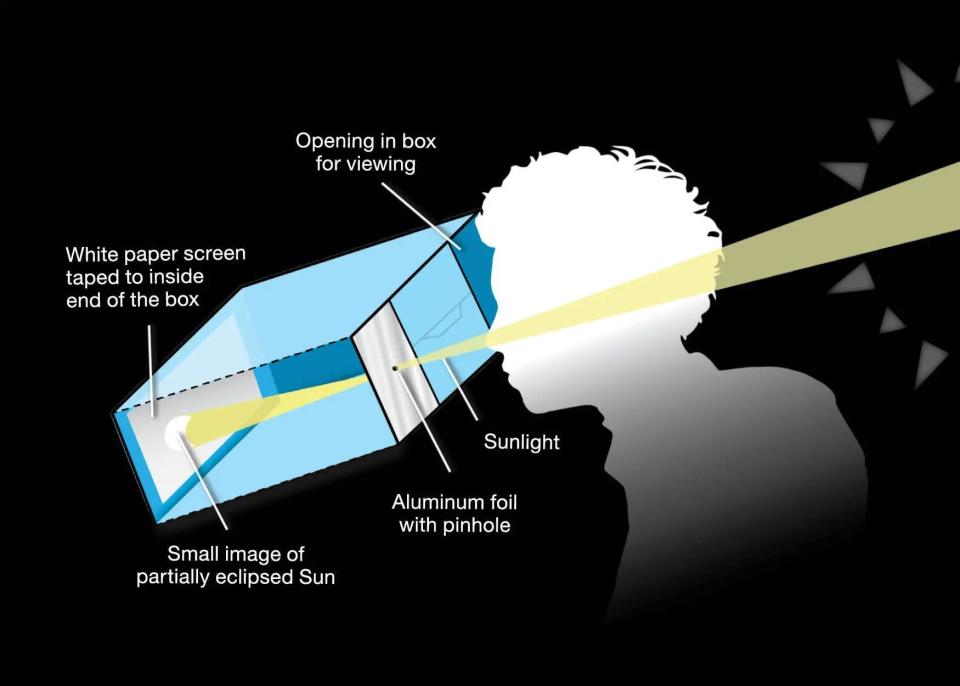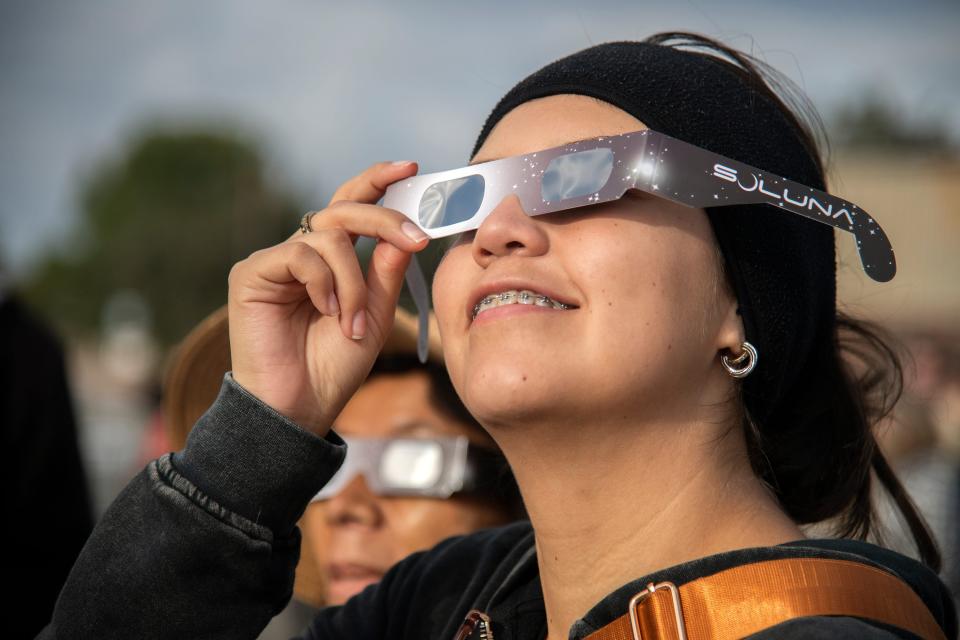Here's a guide to where and how to watch the solar eclipse around Augusta
Families, stargazers, and science enthusiasts across the nation are eagerly awaiting the total solar eclipse passing over several states on April 8. Georgia will not see a total eclipse, but it may be possible to get a partial view of this fascinating astronomical event.
A solar eclipse is caused by the moon moving between the Sun and the Earth, causing the moon to block the sun's light from reaching Earth, casting a shadow down on the planet. According to NASA's maps, Georgians may be able to see about 65% to 85% of the sun covered, depending on where you live.
But you can't just look up at the sky. Here's more info on how to safely watch the phenomenon and where to watch it locally:
More: When is the April 8 solar eclipse in the Augusta area? Find out here with your ZIP code
When is the best time to watch the eclipse around Augusta?
The total eclipse time for the Augusta area is about 1:49 to 4:23 p.m. with the peak time being about 3:08 p.m. Viewers can expect about 76% of the Sun to be obscured.
Where can Augustans go to see the total solar eclipse?
Augusta-area residents would have to travel a long way to be able to see the total solar eclipse. But, if this seems just too good to miss, the closest location to see totality would likely be the southern area of Indiana, about 550 miles away.
An interactive zip code and map tool is available to take a closer look at your exact area's peak times and other possible spots for seeing the total eclipse.

What is the safest way to watch the solar eclipse?
It is never safe to directly look at the sun with the naked eye or through any lens (camera, binoculars, etc.) without a special-purpose solar filter. Those wanting to watch the eclipse should only use solar viewing glasses, also known as eclipse glasses, or a certified handheld solar viewer.
"Eclipse glasses are not regular sunglasses; regular sunglasses, no matter how dark, are not safe for viewing the sun. Safe solar viewers are thousands of times darker and must comply with the ISO 12312-2 international standard," NASA's website notes. "Always inspect your eclipse glasses or handheld viewer before use; if torn, scratched, or otherwise damaged, discard the device. Always supervise children using solar viewers."

Packs of certified glasses can be purchased on Amazon for $15-25, depending on how many are needed.
Do not use eclipse glasses or handheld viewers while also viewing the event through cameras, binoculars, or telescopes, because those devices require different types of solar filters to be safe.
NASA also recommends indirect viewing methods to view the eclipse without looking directly at the sun. One way is to use a pinhole projector, which has a small opening (for example, a hole punched in an index card) and projects an image of the sun onto a nearby surface. With the sun at your back, you can then safely view the projected image. Don't look at the sun through the pinhole.
An eclipse projector can also be made with a cardboard box, a white sheet of paper, tape, scissors, and aluminum foil. With the sun behind you, sunlight will stream through a pinhole punched into aluminum foil taped over a hole in one side of the box. During the partial phases of a solar eclipse, this will project a crescent sun onto a white sheet of paper taped to the inside of the box. Look into the box through another hole cut into the box to see the projected image.
More: A total solar eclipse is coming to the U.S. Here's what you'll see in Georgia.

Are there any eclipse viewing parties around Augusta?
Camp Lawton History Center's viewing party is 12:30-2 p.m. at the Magnolia Springs State Park in Millen, about 47 miles south of Augusta. Materials will be provided to safely view the eclipse. Registration is $5 and parking is $5. There is limited space, so make sure you RSVP ahead of time. Those interested can register by calling (478) 982-1660.
Ocmulgee Mounds National Historic Park's viewing event is 1:30 p.m. in Macon at 1207 Emery Hwy. There will be a limited number of solar eclipse junior ranger books and solar viewers available. Rangers will be present to teach about the eclipse and to help kids earn their solar eclipse badge.
USC Aiken's viewing party is 1:50-4:23 p.m. at Ruth Patrick Science Education Center in Aiken at 471 University Pkwy. There will be various options for safely watching the eclipse on the outside lawn. Eclipse glasses can also be bought on the site ahead of time in room 101 Monday-Friday during normal business hours and on Saturday evenings in the science store during the planetarium shows.
This article originally appeared on Augusta Chronicle: Solar Eclipse 2024: Where to watch in Augusta area, safety info

